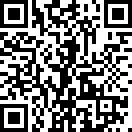 |
Case Report
It is not always as good as gold. Contact allergy to dental gold as a potential cause of burning mouth syndrome: A case report
1 B Pharm Hons I, MD, Sub-Investigator, Veracity Clinical Research, Woolloongabba, QLD 4102, Australia
2 BN, Nurse Specialist and Manager, Veracity Clinical Research, Woolloongabba, QLD 4102, Australia
3 MBBS, FACD, Principal Investigator, Veracity Clinical Research, Woolloongabba, QLD 4102, Australia
Address correspondence to:
Katherine M Darch
Veracity Clinical Research, Suite 18, Level 1, 250 Ipswich Rd, Woolloongabba, QLD 4102,
Australia
Message to Corresponding Author
Article ID: 100031Z07KD2020
Access full text article on other devices

Access PDF of article on other devices

How to cite this article
Darch KM, Holland TL, Spelman LJ. It is not always as good as gold. Contact allergy to dental gold as a potential cause of burning mouth syndrome: A case report. J Case Rep Images Dent 2020;6:100031Z07KD2020.ABSTRACT
Introduction: Inflammation and pain of the oral soft tissues is a common reason for presentation to a dental professional, and with a wide range of differential diagnoses, successful management often provides a significant clinical challenge. One such cause of these symptoms is burning mouth syndrome (BMS), a diagnosis of exclusion based on the presence of a burning sensation of the mouth every day over a period of at least four to six months in the absence of other clinical or laboratory finding to explain the symptoms. Burning mouth syndrome is notoriously difficult to treat and causes significant pain and psychological distress to those who suffer from it. Therefore, thorough investigation and adequate management of potential underlying causes are essential before a definitive diagnosis is made.
Case Report: In this report, we discuss the case of an 80-year-old gentleman with a complex medical background referred to our dermatology clinic for epicutaneous patch testing following a diagnosis of Type 1 BMS who had undergone multiple interventions and trialed multiple therapies with very limited improvement in his symptoms. Epicutaneous patch testing revealed contact allergy to gold sodium thiosulfate, suggesting possible contact allergy to dental restorative alloy as an underlying cause for his symptoms.
Conclusion: Contact allergy may be a causative or contributing factor in patients who present with burning mouth or who are diagnosed with BMS, as in the case of our report, and epicutaneous patch testing should form an important part of the workup for these patients.
Keywords: Burning mouth syndrome, Contact allergy, Gold
SUPPORTING INFORMATION
Author Contributions:
Katherine M Darch - Substantial contributions to conception and design, Analysis of data, Interpretation of data, Drafting the article, Revising it critically for important intellectual content, Final approval of the version to be published
Teagan L Holland - Analysis of data, Interpretation of data, Revising it critically for important intellectual content, Final approval of the version to be published
Lynda J Spelman - Substantial contributions to conception and design, Acquisition of data, Analysis of data, Interpretation of data, Revising it critically for important intellectual content, Final approval of the version to be published
AcknowledgmentsThe authors acknowledge Dr. Martin Darch, BDSc. for his assistance with proofreading and ensuring relevance of content.
Guaranter of SubmissionThe corresponding author is the guarantor of submission.
Source of SupportNone
Consent StatementWritten informed consent was obtained from the patient for publication of this article.
Data AvailabilityAll relevant data are within the paper and its Supporting Information files.
Conflict of InterestAuthors declare no conflict of interest.
Copyright© 2020 Katherine M Darch et al. This article is distributed under the terms of Creative Commons Attribution License which permits unrestricted use, distribution and reproduction in any medium provided the original author(s) and original publisher are properly credited. Please see the copyright policy on the journal website for more information.





